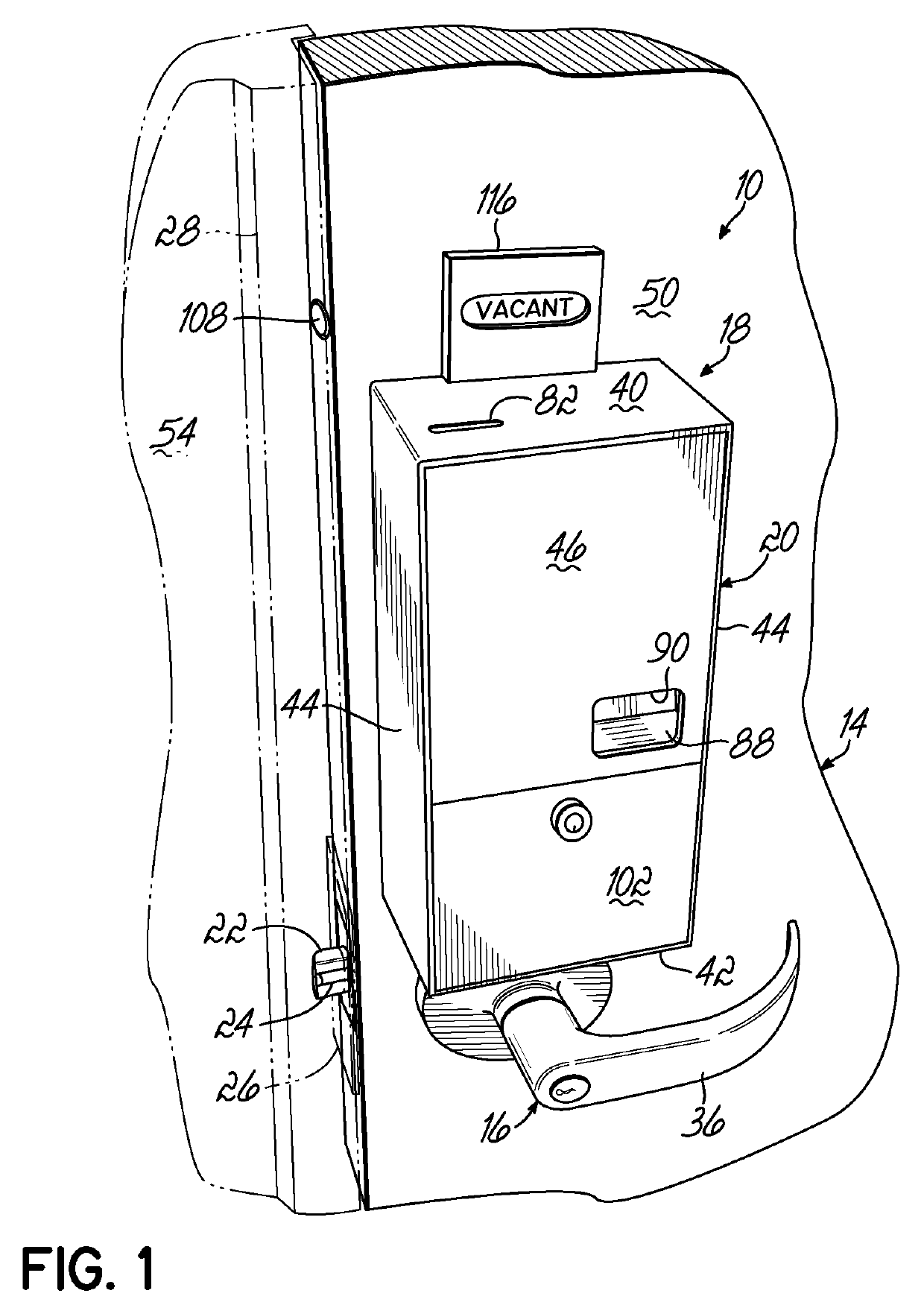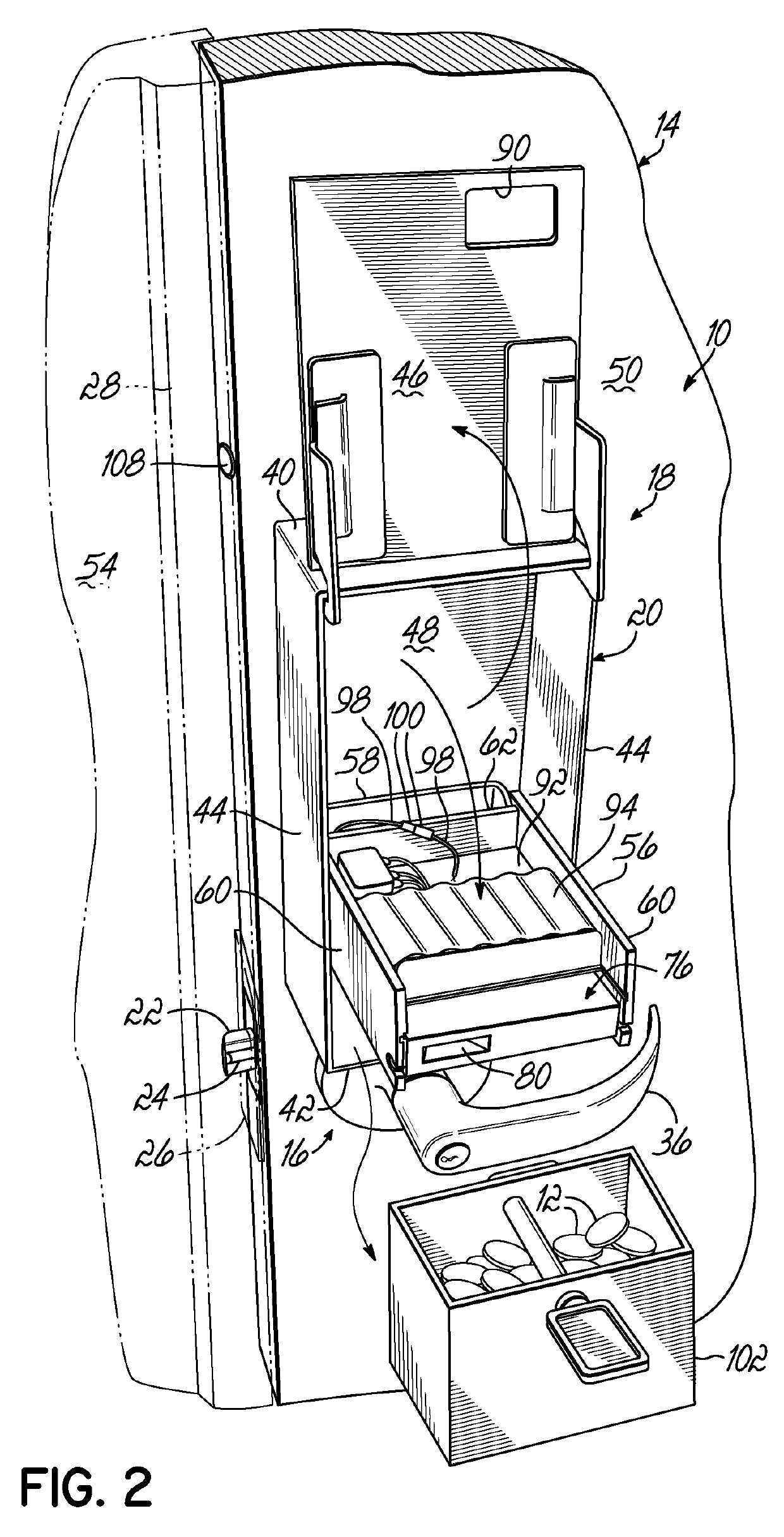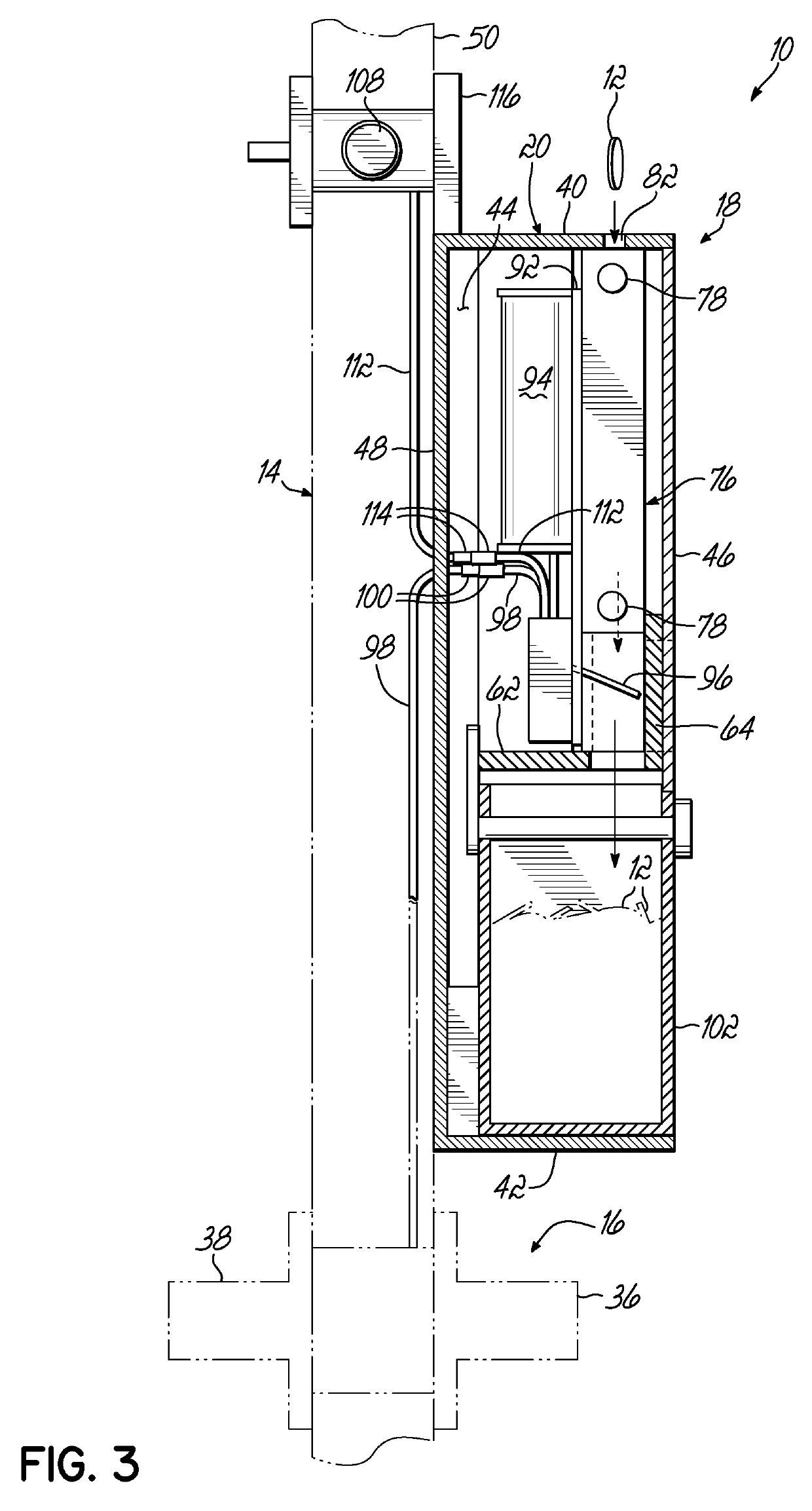Token operated access control system
a token operated and access control technology, applied in the direction of meter-controlled dispensing apparatus, coin-freed instruments, etc., can solve the problems of unsatisfactory use of key operated locks on the restroom door, high repair cost, and high replacement key cost and the “lost” time used to obtain them, so as to reduce the operating cost of the access control system, improve the access control, and reduce the cost of replacement tokens
- Summary
- Abstract
- Description
- Claims
- Application Information
AI Technical Summary
Benefits of technology
Problems solved by technology
Method used
Image
Examples
Embodiment Construction
[0027]Referring now to the figures, and to FIGS. 1-4 in particular, an access control system 10 is shown in accordance with one embodiment of the present invention. As will be described in greater detail below, access control system 10 is designed to be operated by a token 12 (FIG. 3) and is particularly adapted to prevent unauthorized access to a secured area through a door 14, such as a public bathroom or other restricted area. As used herein, it will be understood that “token” is intended to mean a coin, disc or other object that generally has a regular shape such as circular, square, hexagonal, octagonal, triangular or other generally regular shape and is often made by molding, punching, stamping or otherwise forming a material such as plastic, metal or other suitable material. A token may have indicia applied thereto; and a specific size, shape, material and indicia of a token are generally chosen as a function of application requirements relating to use, manufacturing costs, d...
PUM
 Login to View More
Login to View More Abstract
Description
Claims
Application Information
 Login to View More
Login to View More - R&D
- Intellectual Property
- Life Sciences
- Materials
- Tech Scout
- Unparalleled Data Quality
- Higher Quality Content
- 60% Fewer Hallucinations
Browse by: Latest US Patents, China's latest patents, Technical Efficacy Thesaurus, Application Domain, Technology Topic, Popular Technical Reports.
© 2025 PatSnap. All rights reserved.Legal|Privacy policy|Modern Slavery Act Transparency Statement|Sitemap|About US| Contact US: help@patsnap.com



